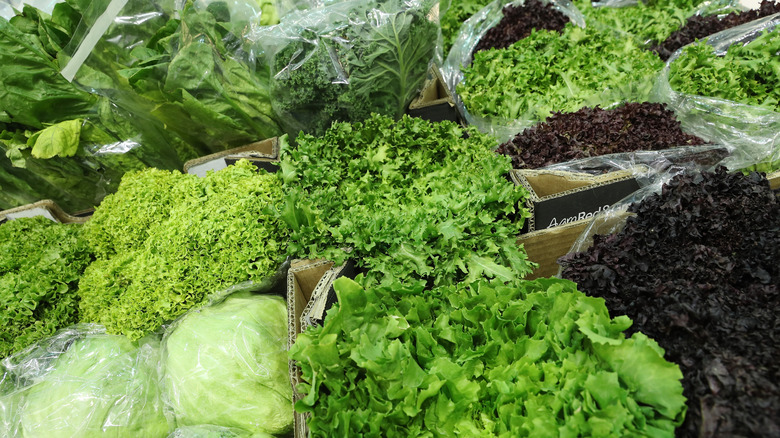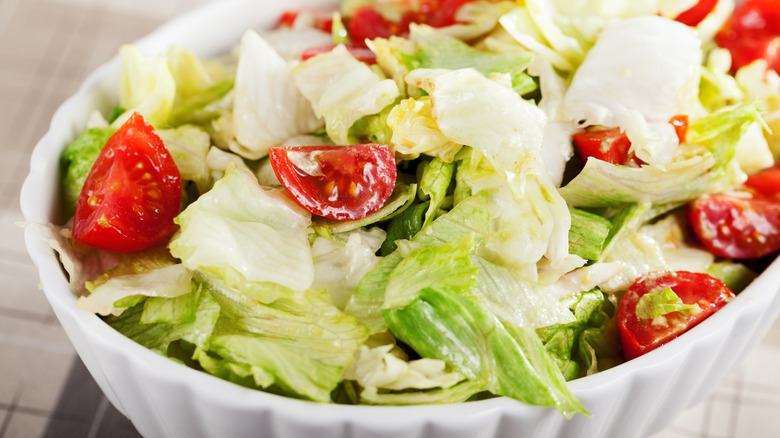This Classic Salad Green Is Lacking In The Nutrient Department
The invention of iceberg lettuce changed the way Americans ate. Per a 2024 YouGov poll, this leafy green is the most popular choice for a salad base. It's layered on top of juicy burgers and sandwiches. You can even add this lettuce to guacamole. Unfortunately, it isn't offering us much in terms of nutrition. The iceberg variety contains a lower amount of nutrients, vitamins, and minerals than other lettuces, such as romaine, red leaf, butter crunch, spinach or kale. Even so, it's worth acknowledging the fair amount of vitamin K it contains. A single cup of iceberg lettuce (about 72 grams) contains 17 micrograms of vitamin K, contributing 22% Daily Value for a 2,000-calorie diet. It is also comprised of 96% water, therefore also offering hydration.
The high-water content within iceberg lettuce is one of the main reasons it's not as nutrient-dense as its leafy green siblings. Another reason iceberg lettuce lacks in nutrients is due to its pale green color as the darker the green, often times the higher it is in protein, fiber, iron, magnesium, calcium, and potassium as well as antioxidants and phytonutrients that may help combat cancer. For example, kale contains 90% water and has more than double the nutrients than an equivalent amount of iceberg lettuce. A 72-gram portion of kale boasts 63 milligrams of magnesium, 148 milligrams of calcium, and 324 milligrams of potassium. It also has 280 micrograms of vitamin K, which reaches well over the Recommended Daily Value at 234%.
Have your iceberg and with more nutrients too
We don't reap as many benefits from eating iceberg lettuce as we would if we swapped it out for kale. However, kale doesn't offer the same crisp, refreshing balance that iceberg lettuce does. Moreover, iceberg lettuce remains a staple on restaurant menus, since Americans eat a lot more salad greens than you think. If you're a die-hard iceberg lettuce fan, doubling the serving size is an effective way to increase the nutrition without adding a significant number of calories, carbohydrates, fat, or sodium. Alternatively, you could still enjoy an iceberg-like crunch and freshness while improving the nutrient density if you opt for romaine lettuce — you'll hardly be able to tell the difference. As an iceberg-lettuce lover myself, one of my favorite hacks is to combine iceberg lettuce with an equal amount of dark leafy greens.
It's worth noting that the nutrient quality of iceberg lettuce might be higher if you grow it yourself or buy it from a local farmer's market instead of a grocery store. This is because once fresh produce is picked, packaged, and shipped across the nation (for many of us), the amount of nutrients it contains significantly decreases. This applies to any type of fresh produce. But since iceberg lettuce already has a low nutrient content, you may want to keep in mind that the sooner you can consume it after picking, the more nutritious it will be.

